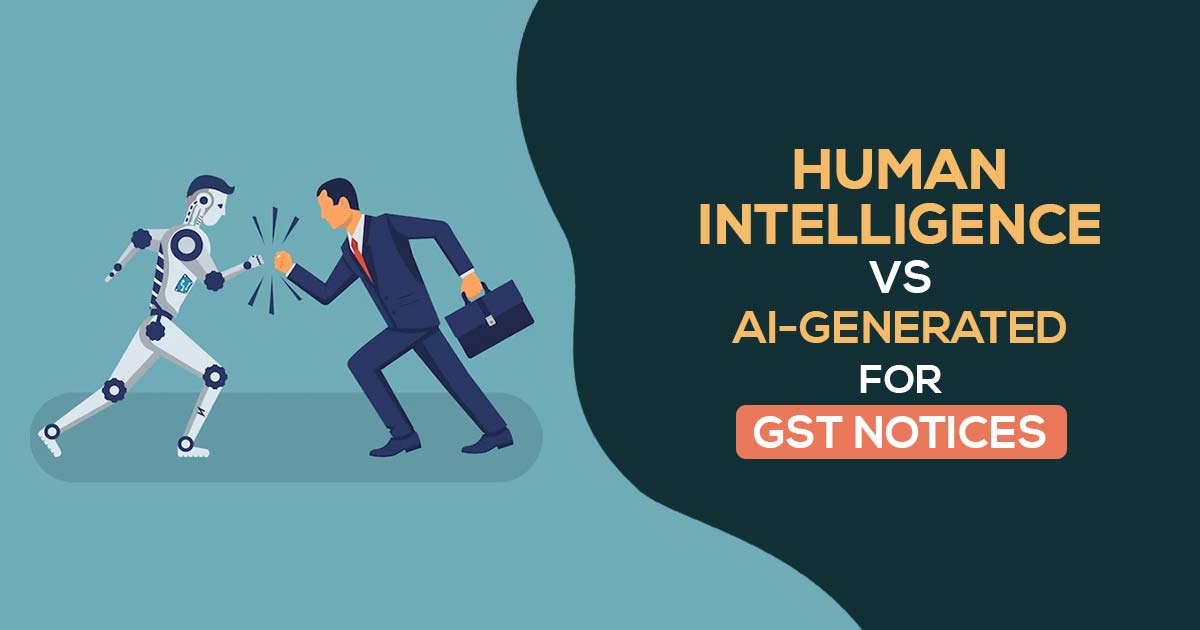
Many emerging sectors have been issued notices for GST tax evasion. The tax authorities have been utilizing the latest technology, Artificial Intelligence (AI), to track discrepancies in tax payments. This has raised concerns and started a debate over the use of AI.
If we focus on the previous financial year alone, the department has detected GST evasion amounting to Rs. 30,000 crore through AI. Out of the total evasion, Rs. 15,000 crore has already been recovered by the Finance Ministry, according to a senior official from the department.
GST Demand Notices for Cos
Reviewing GST evasion cases during 2017-18, central tax officers have issued approximately 33,000 GST demand notices so far. The recent surge in the number of notices issued by the department has raised concerns about increased scrutiny on businesses. A senior government official stated that AI technology has played a crucial role in identifying such a significant number of GST evasions in recent years.
71 show cause notices have been sent solely to online businesses, suspected of evading GST amounting to Rs. 1.12 lakh crore in the fiscal year 2022-23 and the initial seven months of 2023-24. Prominent insurance companies, including Aditya Birla Sun Life Insurance, HDFC Life Insurance, and Bajaj Allianz, allegedly evaded Rs. 2,350 crore in GST. Tax authorities are actively searching for more such evaders. The shipping and aviation sectors are yet to undergo scrutiny.
What are Experts Saying About AI-generated GST Notices?
Experts suggest that considering the increasing number of show cause notices being issued, tax authorities should exercise caution and not solely rely on this new technology. They emphasize that a machine is not an alternative for an officer and cannot match the skills of an officer.
Sudipta Bhattacharjee, a partner at Khaitan & Co, emphasizes that AI should not replace human intelligence, especially in tax administration.
While Artificial Intelligence (AI) is a valuable tool for identifying trends, the current issue lies in the government’s excessive and inappropriate use of AI to send notices to taxpayers. Bhattacharjee states that the non-application of human review before issuing a tax notice can be legally problematic and grounds for dismissing a notice.
Officials from the finance ministry affirm that AI technology is only used to identify differences in GST payments. After this step, the administration re-evaluates the findings and issues a demand notice for the specific case.
Bhattacharjee notes that in most cases, errors have been observed in the notices issued by AI without the intervention of human expertise.
On the other hand, Gunjan Prabhakaran, Partner and leader, of Indirect Tax at BDO India, admits that AI aids in the review process more efficiently than the human mind. It accurately correlates different data points and identifies gaps. However, the government should not solely rely on mismatches without inquiring with taxpayers about the reasons behind them.
Read also: Steps to Verify an Income Tax Notice Using DIN with Benefits
Prabhakaran suggests that tax authorities should inform taxpayers about the legal aspects of issuing such notices. Implementing such practices can lead to better outcomes using AI technology.
Recognise the Accuracy of GST Notices Before the Issue
One way to enhance the accuracy of issuing notices is to send an intimation notice before issuing a show cause notice. This would establish better communication between the industry and the government, especially as the use of AI increases, according to Bhattacharjee.
The GST law instructs authorities to issue an intimation notice before a show cause notice. However, GST authorities, generally do not follow this provision. With the rising usage of AI, there should be a corresponding increase in the issuance of intimation notices before show-cause notices, especially for significant tax demands. This approach would help reduce friction and ensure that taxpayers are not caught off guard.
GST Provision for Tax Notice
The GST law already includes a provision for an intimation notice sent to taxpayers before issuing a show cause notice. This notice informs taxpayers about dissimilarities in their returns and provides them with an opportunity to respond within 30 days, explaining the reasons behind the mismatches.
Tax administration has become more sophisticated, and it will continue to evolve. Case law is being established, and legal interpretations are becoming standardized. Data analytics has also reduced the areas where businesses can hide.
Pratik Jain from PwC India suggests that the use of AI in tax administration will only increase, and businesses should update their processes to ensure accurate tax payments.
Recommended: Big Bang! How ChatGPT AI Model Can Change Future Accounting
There needs to be broader consultation between the government and the industry on effectively utilising new and emerging technologies so that the industry can be well-prepared. However, the primary responsibility lies with the industry to verify the relevancy of the data they submit to the authorities, according to Jain, who is the national leader for indirect tax at PwC.
Jain further suggests that companies should follow the government’s lead and start applying AI to analyze their data, enabling them to navigate the complex GST landscape more accurately.